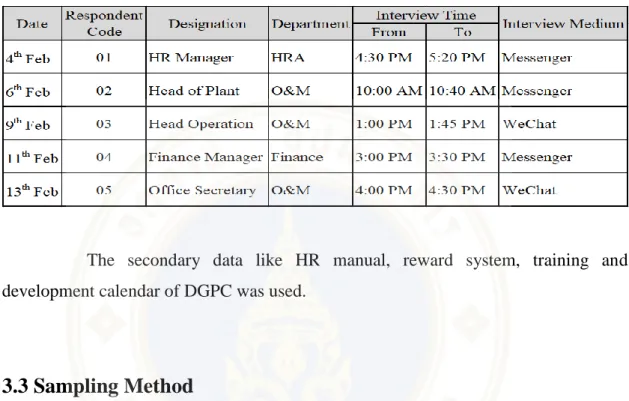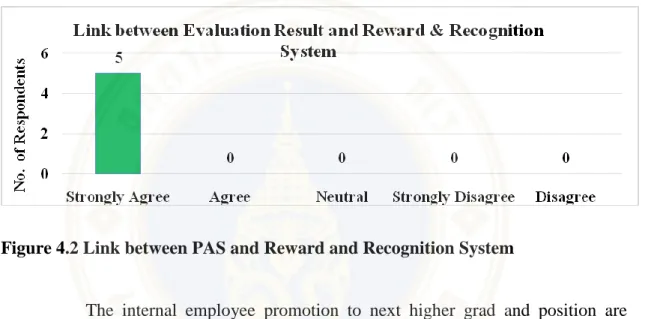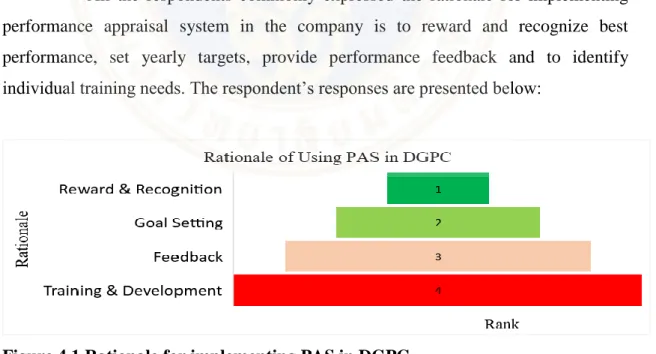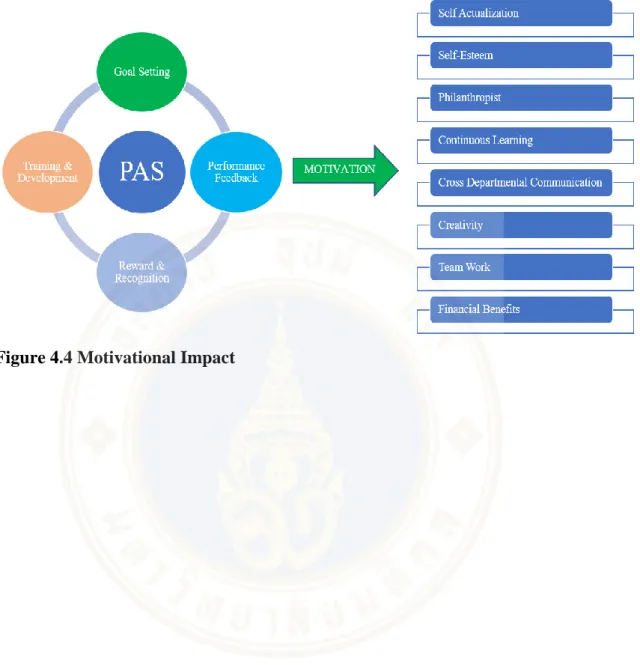In addition, my sincere thanks to the management of Druk Green Power Corporation and the respondents for allowing me to conduct this research and for willingly sharing their thoughts and experiences despite their tight work schedule. This paper attempts to examine the effectiveness of PAS on employee motivation in Druk Green Power Corporation Ltd, Bhutan. The research study examines the feasibility of introducing a performance appraisal system, how the system relates to rewards and recognition, promotion, training and development of employees, performance feedback and their motivational impact.
If we mention a management tool that requires the overall growth and development of employees in the company, then it is the performance evaluation system. It is the system that focuses on people and performance to generate improvement and maximum productivity in an organization. Therefore, in this cut-throat competitive business environment, it is impossible to dismiss the implementation of a well-structured performance appraisal system as it is becoming one of the necessities for an organization.
Therefore, it is the managers' and the company's ability to motivate their employees to make them perform better by providing them with the right working environment. Furthermore, performance appraisal is also considered to be a necessary basis for employee promotion, merit pay, training, recognition, compensation (Singh, 2011). Currently, DGPC has a performance appraisal system in place to monitor employee job performance, motivate individual employee to reach their full potential, provide continuous advice and feedback, advocate employee growth and development to increase efficiency and productivity, identify training needs and reward employees accordingly herewith.

Problem Statement
Objective of the Study
Scope of the Study
Relevance of the Study
Structure of the Paper
Chapter three covers research methodology of data collection through semi-structured interview, secondary sources, sample size and framework of data analysis. In chapter five, the research findings are synthesized using literature and responses from the participants.
LITERATURE REVIEW
- Definitions of Performance Appraisal
- Origin of Performance Appraisal
- Review of Related Studies
- Theoretical Framework
- Theory X and Theory Y
- Two- Factor Theory
- Goal- Setting Theory
- Effective Performance Feedback
- Use of Performance Appraisal
Idowu and Ayomikun (2017) had studied the effectiveness of PAS found that there was a positive result when performance appraisal was used as a motivational tool. It was also found that employee satisfaction and motivation increased when more than one assessment technique was used. Prasad (2015) found that transparency in the system helps in effective feedback, fair compensation and reduces attrition.
He also found that to strengthen the impact of performance appraisal, careful system design and administration with a focus on employee development was necessary. Khan (2013) who studied the role of performance appraisal in employee motivation found that performance appraisal helps in strategizing better training and development needs. They also found that it provides a useful cue for job promotion and not only serves for better job feedback, but also encourages and motivates people to perform better.
Nemeroff & Wexley (1979) and Greenberg (1986) found that employees tend to be satisfied with the system if they are given the opportunity to discuss their performance. Emmerik et al., (2012) also found that appraisal as a basis for motivating employees through reasonable means of salary increase and internal employee promotion. Moreover, Manna (2008) also found that fair evaluation transmits a strong message across employees that their dedication, commitment and hard work towards their work will be paid in the near future.
According to Brun and Dugas (2008), performance appraisal helps motivate employees, leading to creative problem solving through non-monetary rewards such as praise, performance certificates, celebrations, and speeches. A study on the effectiveness of performance appraisal (Thuvakudi, 2013) found that it not only helps in internal promotion of employees but also helps in determining better training and development needs of the company. He also concludes that providing performance feedback, followed by proper recognition of performance, helps in achieving business objectives as intended.
In addition, the employee's participation in the goal setting process not only helps in understanding the expected goals, but would also reduce resistance to acceptance. It helps identify discrepancies between what they have done and what they want to do.
RESEARCH METHODOLOGY
- Qualitative Method
- Data Collection
- Sampling Method
- Data Analysis
Secondary data such as HR manual, reward system, training and development calendar of DGPC were used. Due to the researcher being away from the country of origin and the limited time frame of the research, a purposive sampling method was used. It is a widely used technique in qualitative research to identify and select individuals or groups who have knowledge and experience in the research topic area (Crewsell & . Clark, 2011).
This will make the author understand the issues related to the effectiveness of performance appraisal in motivating employees as the respondents are not only familiar to the author but they also have better and deeper experiences to share. Replication in this context is reviewing and checking data and relating it to the theoretical framework developed to provide meaningful insights. The first part of an analysis captures the respondents' portfolio, the second part focuses on the effectiveness of performance appraisal in providing effective performance feedback, the third part focuses on training and development, and the fourth part focuses on the effectiveness of performance appraisal in reward system. motivate employees.
The findings are then carefully synthesized using literature research and the key findings are presented in the form of a diagram.

RESEARCH FINDINGS & ANALYSIS
- Respondents Profile
- Rationale for implementing PAS in DGPC
- Link between PAS and Reward and Recognition System
- Link between PAS and Training and Development
- Link between PAS and Effective Feedback
It is important to know how respondents feel about the connection between evaluation results and the company's reward and recognition system to drive their motivation. It is all based on our performance and ability to live up to the company's needs, interest and concerns” (Respondent 01). However, in DGPC, PAS is not used exclusively for promotion but it is used as one of the key criteria.
Therefore, the research finding really correlates with Herzberg's two-factor theory, which postulates salary as one of the motivational factors. Certificates of achievement, celebrations, praise in meetings and simple words like job well done and thank you are some of the current practices. To earn these accolades, employees must show their creativity, act smartly on time, add value, promote the company name through corporate social responsibility, etc. Such a platform of recognition has been found to promote motivation.
Assessment of performance evaluation has also been found as one of the critical selection criteria for pursuing higher studies. It was learned that although one of the main objectives of PAS is to identify training and development needs to address the problems of current as well as the future required skills, the supervisors and employees overlook the assessment of training needs. This has given a negative impression to management and hampered the successful implementation of training and development programmes.
The research shows that there is a moderate correlation between PAS and the training and development of employees. Furthermore, supervisors and most of the individuals are unable to buy into the core of training and development rather than thinking of it as an incentive. Therefore, it was considered important for the management to train all the supervisors in the importance of training and development of employees, encourage individuals and involve them as one of the key people to identify needs, follow up on identified training plans with the management.
Training, development, growth and advancement are not only considered as one of the motivational factors for self-esteem and actualization, but Maslow and Herzberg also classified them as intrinsic factors with a very large influence on motivation. One of the goals of PAS in the company is to motivate employees by setting mutually agreed performance goals, clarifying, redefining the company's priorities and providing constant advice and feedback. Second, their salary increase, promotion, bonus, recognition, training and development are based on the evaluation result.
Third, they consider it effective because of the cross culture where the practice of high power distance prevails.

CONCLUSION & RECOMMENDATION
Conclusion
Such formal and informal recognition has helped in creative and innovative services, not only in the workplace, but employees are found actively involved in voluntary services such as planting trees in and around project sites to conserve water and prevent soil erosion. However, it was revealed that although PAS is linked to the identification of training and development needs, individuals do not use it to that extent. This is because the training and development needs are currently mostly managed by head office by department heads and HR managers.
Furthermore, many of the individuals think that training and development is an incentive rather than taking it as an opportunity to develop themselves and meet the company's current and future requirements. The result reveals that PAS not only helps in providing effective performance feedback but also motivates employees to perform better. There are three critical factors that, according to current practice, lead to effective performance feedback.
First, their service rule requires semi-annual performance reviews where supervisors and employees must formally provide performance feedback. The process encourages supervisors to set mutual performance goals, including subordinates, rather than forcing them to follow. This helps in understanding performance expectations, expressing enthusiasm, soliciting feedback and executing with the right direction towards achieving goals.
It reduces employee resistance and motivates them to perform better when they are involved in goal setting. Moreover, formal and informal feedback really helps the employees to get motivated to perform better with enthusiasm.
Recommendations
- Training and Development
- Suggestion for Future Research
An exploration of the relationships between performance feedback interview characteristics and interview outcomes as perceived by managers and subordinates. PERFORMANCE APPRAISAL: An empirical study to understand staff satisfaction and motivation through the system.
APPENDICES
APPENDIX A: Interview Questions



